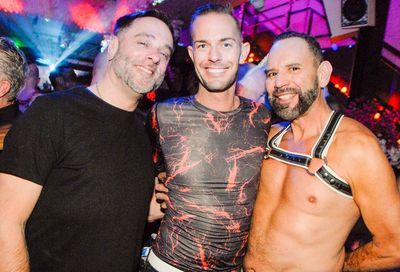The Order: 1886 (Review)
While its beauty deserves to be seen, as a game The Order: 1886 repeatedly stumbles

At $60, modern games are asking a lot. Given their price, they need to justify the cost with content that matches our expectation. Dragon Age: Inquisition can be easily enjoyed for up to (and, indeed, over) one hundred hours without repetition of stories or missions. Multiplayer games such as Call of Duty or Halo: The Master Chief Collection have stellar single player campaigns, but offer peerless multiplayer action that can extend the game’s initial length by days, weeks, or even months. Grand Theft Auto V offered both a lengthy single player campaign and an extensive multiplayer component, all for the same $60 price.
Of course, that begs the question of how little we can justify getting from a game in return for paying full price. What’s the minimum a developer can fit onto a disc and still warrant that $60 sticker? With The Order: 1886, I’m seriously conflicted. From a gameplay perspective, no, it can’t justify its own purchase price. What little time you’ll spend in control over the game’s eight hour length — which, in and of itself, smacks of miserly — is in no way worth what you’ll spend to buy the game. Add to that a lack of multiplayer or replayability factor, and it makes a shoddy case for itself.
However, whether you can justify buying The Order depends on your expectations. Do you skip every cutscene, preferring to remain in the action at the expense of story? Are you the sort who runs through every area, ignoring exploration and instead focusing on the next objective? Is the idea of a cinematic game something that makes your skin crawl? If you answer yes to any of these, don’t get The Order. Buy something else.
For anyone left, what The Order has to offer is something I can’t quite quantify. It baffled me in its opening hours, frustrated me during intense gunplay, and wrestled the controls from me repeatedly, preferring to boil gameplay down to its bare minimum or switch to a cutscene instead. And yet, as I played through the game, I couldn’t help but get sucked into the story it told, to fall for the characters I encountered, and — above all else — to remain in awe of the astoundingly beautiful world developer Ready at Dawn has created.

The Order takes place in an alternate reality Victorian-era London, where steampunk technology is rife. Electricity is commonplace, airships roam the skies, broadcast towers loom high over iconic landmarks, and guns are 1800s versions of twentieth century automatic rifles. In this universe, King Arthur and his roundtable of knights successfully found the Holy Grail, which led to the creation of a secret order of knights who gained near-immortality thanks to Blackwater, which heals wounds and extends their lives to centuries, rather than decades. These knights keep the human world safe from half-breeds — werewolves and vampires, to you and I.
Players assume control of Grayson, formally titled Sir Galahad, a knight of the order. He’s gruff, serious, and extremely adept at killing half-breeds. Surrounding him are a cast of relatively fleshed-out characters, including suggested love interest Lady Igraine, French womanizer Lafayette, Galahad’s mentor Sir Percival, and the Knight Commander Sir Lucan.
The Order manages to give an incredibly mixed first impression. Its opening scene, which features Galahad escaping from an underground prison, provides a taste of what to expect over the course of the next eight hours: gorgeous graphics and minimal gameplay. Seriously, I cannot intimate how good this game looks. When the opening cutscene seamlessly moved into gameplay, I sat agog, the graphics showing no visible signs of diminishment. As I stumbled, injured and exhausted, through the cobbled corridors of the prison, Galahad’s clothes rippled and rustled, his hair flopped across his face, dust and moisture were heavy in the air, light reflected in pools of water, enemies were taken down in a sickeningly realistic manner and, when the game saw fit to move back into a cutscene, the transition was undetectable.

Indeed, The Order runs at all times, in cutscenes and in gameplay, as though it were CGI rendered. Every location, whether underground stations, war-torn bridges, aboard an airship, or inside an asylum, to name a few, staggered me with its beauty. I have no qualms in calling The Order the best looking game I’ve ever played, from a graphical perspective. Its texture detail, the perfect reflections in glass, mirrors and water, the particle effects that blow around characters and through areas, the explosions, gunfire, electricity, character models, buildings, lighting — everything in this game is almost obscenely beautiful. It’s unparalleled, proof that Sony’s console is mightily capable. It’s made even better by the fact that not once will you encounter a loading screen. After you boot the game up, that’s you until the credits roll.
Sadly, its beauty often feels skin-deep. You’ll spend a lot of time navigating through The Order’s various locations, but you never really get the sense that you’re directly contributing to what’s happening within them. Walk through water and no ripples will appear. Shoot windows or walls and no bullet holes will form (though vases and wooden barricades and other debris can be destroyed during battles). Stand in front of a mirror or glass and, while everything else is perfectly reflected, Galahad won’t be. Watch as AI characters engage in seemingly dynamic conversations — as I crept through a rooftop scene, I stopped to watch a young man take out the trash from a restaurant, as an unseen man berated him, in a moment most would miss had they not been actively looking down — but stay long enough and the characters will loop back through the same dialogue. I too often felt as if I was being moved through a world that had to be kept pristine lest someone else come along. The Order is a museum, filled with wonderful things to see and do, but there’s always the rope line saying “Don’t touch.”
What’s more, shooting sequences are average. At its core, The Order is a third-person cover shooter, a genre tackled with greater skill by other franchises. Transitioning between cover is an indelicate procedure, and I often found myself standing or crouching on the wrong side of where I needed to be. Enemies displayed a lack of intelligence with regards their own preservation — at one point, a man walked out of cover and started spraying his revolver in a horizontal arc, with no care for where I was or the bullets I quickly put into his body. To call it a linear experience would be an understatement, as you’re shuttled through corridors and small outdoor areas — you’ll frequently see the outside world, or large areas, but they’re not for you to enjoy.

Layered on top of this base of mediocrity is the galling fact that the game’s biggest draw — the half-breeds — are relegated to three sloppy fight scenes and two quick time events. You’ll spend most of the game battling various humans of varying degrees of innocence, but mere minutes engaged with what could have been The Order’s coolest feature. Werewolves are dispatched by pointing your gun at their heads and filling them with bullets, occasionally pressing X to dodge their incoming attacks. They’ll run at you one at a time, so there’s no skill here; don’t get hurt and you’ll succeed. At the game’s midpoint and end, you’ll battle larger werewolves, but instead of a boss battle, requiring tactics and skill, you’ll be expected to master button presses as various quick time events flash on screen. It seems The Order is too happy to script the action for you, rather than let you take control. It’s beautiful, yes, and the scripted action scenes are visually (and aurally) engaging, but dammit, I wanted to battle the werewolf — I didn’t want the game to tell me what to do. Even stealth sections feature the same hand-holding, completely devoid of skill. Sneak up behind someone, or wait for them to come near you, and press Triangle at the right time to kill them. Animations are gruesomely awesome, but they’re empty wins. I didn’t feel I’d accomplished a great kill when it amounted to tapping a button at a predetermined time.
In spite of all of that, after the first few chapters, The Order utterly engrossed me. Its story is rich with mystery, suspicion, politics, death, and rebellion. There’s half-breeds, a rebel faction which seeks to overthrow the United India Company (a more powerful version of Britain’s East India Company), insubordination in the knights, and various thrilling set pieces — the airship being a particular highlight. Everything is told with impeccable quality over its eight hour length. Direction of cutscenes, which weave seamlessly into gameplay, and the heavy focus on a cinematic experience lends the overall game the feeling of an interactive film. Voice acting is stellar, the script has its share of powerful moments, and I found myself eager to explore every area, seeking out newspaper clippings, photos and other objects to learn more about The Order’s world.
Even its average gunplay is improved by the steampunk setting. A young Nikola Tesla works for the knights, devising a range of fantastic (and fantastical) weaponry for dispatching humans and half-breeds alike. A thermite rifle sprays an ignitable vapor at enemies, which can then be exploded with a secondary shot. The induction lance shoots a focused stream of electricity, which can brutally decapitate, dismember or disembowel enemies (as can a well-placed shotgun shell). The auto-rifle combines a powerful machine gun with an air blast that can disorient attackers. There are frag grenades, smoke bombs, a rocket launcher, powerful pistols and even a modern crossbow, complete with scope. The Order offers you various ways of dispatching enemies — and in some fights, you can choose between using cover to pick dispatch them, or heading up high and sniping from afar.

Even the quick time elements become less tedious as you progress, while the game’s use of minigames — there are two, both are wonderfully pretty — is sparing enough that they remain enjoyable. I found myself forgiving more of the game’s obvious flaws as I swept through the campaign, my disappointment replaced with engagement in the plight of Sir Galahad as he starts to question everything he’s ever known. The story has depth, as well as fleeting moments of humor and heart — though it’s predominantly (and somewhat overbearingly) serious in tone.
By the game’s end, I was enraptured with the world Ready at Dawn had established. Anyone who has played Metal Gear Solid 3 will know the distress I was in during the final scene. Tasked with killing one of the game’s main characters, I was offered no choice in the action. In the wake of the preceding cutscenes, as I cocked the gun, I felt no honor, no pride in what I was about to do. I sat, staring, as “R2” sat on screen, prompting me to pull the trigger. Two minutes later, I did — but for the first time in my eight hours, this death felt like murder, not a justified killing.
Unfortunately, I wasn’t ready for that to be the last scene. Indeed, it didn’t seem Ready at Dawn was, either. The game fails to tie up several of the story threads it starts. Conflicts remain unresolved, Galahad’s fate is unknown and the plight of the rebels, the knights and the half-breeds remains a mystery. Why? Because Sony wants us all to wait, patiently, for The Order: 1887 (presumed title), a sequel that has undoubtedly been greenlit. Rather than offer a fully satisfying conclusion, we’re instead looking at the start of a franchise. I have no problems with that, indeed I can’t wait to return to Galahad’s world, but it feels cheap — even unearned — given the short length of the game to begin with.
And, really, that’s the crux of The Order’s problem: length. It sticks around for so short a time that it’s hard for me to really recommend it. To those who have no issue with cinematic games, which place emphasis on graphics and story above all else, buy it. It will constantly melt your brain with the beauty that shines from every perfectly polished pixel. YouTube videos do no justice to how stupendously pretty The Order looks in person. To those who need a game to offer more than that, you’re going to feel shortchanged. After the campaign is done, there’s nothing else on offer — no multiplayer, no real reason to replay the story. After those eight hours — and some will complete it in less than that — you’re done. Sixty dollars. Finished.
There’s no doubt that The Order deserves to be seen. For PS4 owners — for anyone, really — it’s one of the most beautifully crafted games of all time. As a game, though, it stumbles repeatedly. If you’re okay with the occasional bruise, and can justify paying full price, I can’t recommend it enough. For everyone else, wait a few months and get it at discount.
The Order is available now on PS4.
Support Metro Weekly’s Journalism
These are challenging times for news organizations. And yet it’s crucial we stay active and provide vital resources and information to both our local readers and the world. So won’t you please take a moment and consider supporting Metro Weekly with a membership? For as little as $5 a month, you can help ensure Metro Weekly magazine and MetroWeekly.com remain free, viable resources as we provide the best, most diverse, culturally-resonant LGBTQ coverage in both the D.C. region and around the world. Memberships come with exclusive perks and discounts, your own personal digital delivery of each week’s magazine (and an archive), access to our Member's Lounge when it launches this fall, and exclusive members-only items like Metro Weekly Membership Mugs and Tote Bags! Check out all our membership levels here and please join us today!



















